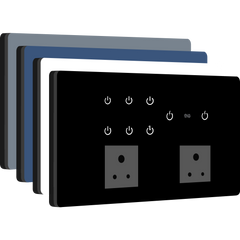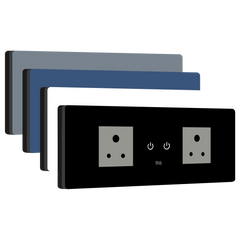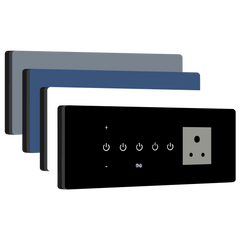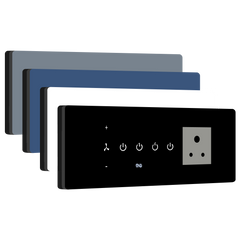Long-Range WiFi: Boosting Connectivity in Your Smart Home

1. Definition
Long-range WiFi refers to the ability of a wireless network to maintain a strong and stable internet connection over long distances within a home or building. This is especially important in smart homes where multiple devices need to stay connected to the internet, such as smart lights, security cameras, thermostats, and more. Long-range WiFi enhances the coverage area of your WiFi network, ensuring that every device in your home receives reliable and uninterrupted connectivity.
2. Key Takeaways
- Long-range WiFi extends the reach of your wireless network, allowing devices to stay connected even in large homes or areas with many walls and obstructions.
- It helps smart devices function optimally by providing a stable internet connection across the entire home.
- By improving WiFi coverage, long-range WiFi ensures uninterrupted communication between smart switches, sensors, and other IoT devices.
- It reduces issues like dropped connections, slow response times, and connectivity problems for remote or hard-to-reach devices.
3. Why Long-Range WiFi Is Important
-
Improved Coverage in Large Homes
In larger homes, especially multi-story houses, standard WiFi signals may struggle to reach distant areas, leading to weak or no connection for devices placed far from the router. Long-range WiFi solutions, such as WiFi extenders, mesh networks, or dual-band routers, help extend the WiFi signal throughout the home, ensuring every device stays connected. -
Stable Connectivity for Smart Devices
For smart home systems to function properly, devices need a strong and stable connection to the internet. Smart switches, lights, cameras, and thermostats rely on WiFi to send and receive data. Long-range WiFi ensures that these devices work efficiently, no matter where they are placed in the house. A strong signal guarantees that your smart switches respond to commands quickly, even if they're located in a far corner of your home. -
Avoiding Interference and Dead Zones
Regular WiFi routers often create "dead zones," areas in the house where the WiFi signal is too weak for reliable communication. Long-range WiFi helps eliminate these dead zones by ensuring that signals can travel through walls and around obstacles. It also reduces interference from other electronic devices, ensuring a smoother experience for smart home devices. -
Enhanced Streaming and Data Transfer
Smart homes often require high-speed internet for streaming videos, transferring data between devices, and interacting with cloud-based services. Long-range WiFi ensures that these activities can be carried out without interruption, providing seamless streaming for smart TVs and uninterrupted data synchronization for other devices, such as security cameras and voice assistants. -
Better Control and Accessibility of Remote Devices
With long-range WiFi, controlling devices that are placed in remote or hard-to-reach locations becomes easier. Whether you’re adjusting the lighting in your basement, checking security cameras in your backyard, or controlling devices on a different floor, long-range WiFi ensures you can access and control your smart home devices from anywhere within the property.
4. Example/Use Case
Consider a family living in a two-story house with a smart home setup, including smart lighting, thermostats, cameras, and security systems. The WiFi router is placed on the ground floor, and while the devices on the same floor work well, those on the second floor experience weak connectivity.
To resolve this, they install a long-range WiFi solution like a mesh network. The mesh system ensures that every smart device—whether it’s a light switch in the bedroom or a security camera in the garden—gets a strong and stable connection. The family no longer faces slow responses or disconnections when controlling devices from the second floor or yard.
5. Frequently Asked Questions (FAQs)
-
What is the difference between long-range WiFi and regular WiFi?
Long-range WiFi solutions are designed to cover a larger area and maintain a stronger signal over greater distances. They are equipped with technologies such as mesh networks, high-powered routers, and range extenders to provide reliable coverage even in larger homes with many obstructions. -
Can I improve my current WiFi coverage without buying new equipment?
If your current WiFi setup is insufficient, you can improve coverage by using WiFi extenders or upgrading to a mesh network system. These options can significantly extend your network’s range and improve connectivity in previously weak areas. -
Do long-range WiFi solutions affect the speed of my connection?
While long-range WiFi can extend coverage, the speed of your connection may decrease slightly if you’re using range extenders or mesh systems. However, modern systems are designed to minimize this effect and maintain strong speeds even at the edge of the network. -
How do I choose the right long-range WiFi system for my home?
Consider factors such as the size of your home, the number of devices you need to connect, and the layout of your space. Mesh systems are ideal for large homes with many devices, while WiFi extenders are a more affordable option for smaller homes. -
Can long-range WiFi work with all smart home devices?
Yes, long-range WiFi is compatible with most smart home devices, including smart switches, security cameras, voice assistants, and thermostats. As long as your devices support WiFi connectivity, they will work seamlessly with long-range WiFi solutions.
Ensure a reliable and uninterrupted connection for your Iotics Smart Switches and other smart home devices with long-range WiFi technology. Keep your smart home operating smoothly, no matter the size of your home. Explore Long-Range WiFi Solutions.
7. Related Terms
- Dual-Band WiFi
- Mesh Networking
- WiFi 6 Support
- Network Optimization










